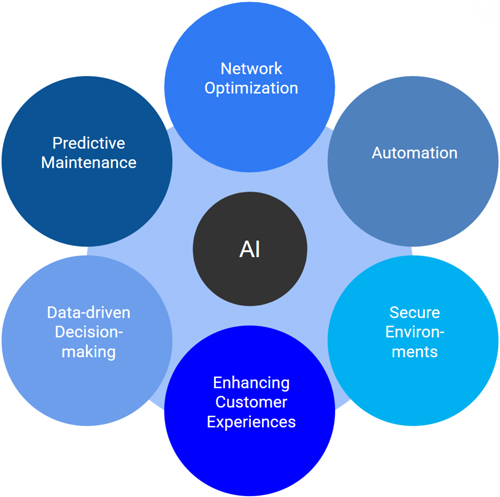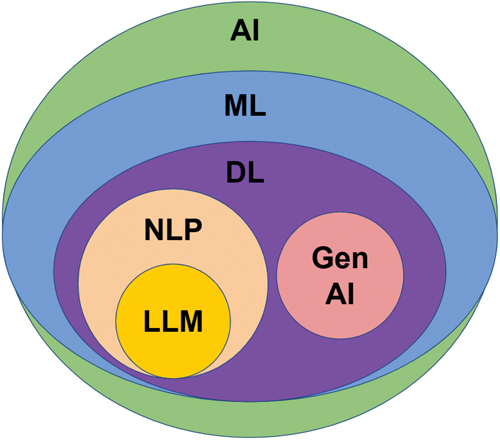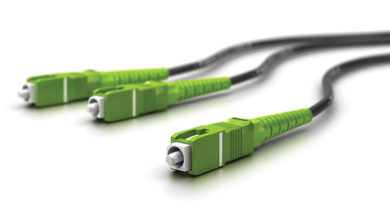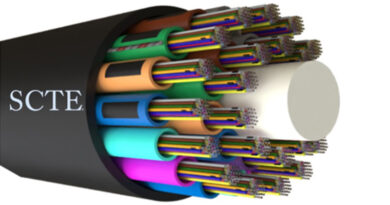AI’s Impact on Optimizing Fiber Networks
Artificial intelligence (AI) is revolutionizing our digital economy, enabling faster, smarter, and more efficient broadband and Internet connectivity solutions. In my 2023 peer-reviewed paper, Unlocking the Power of Big Data (tinyurl.com/yc8k3h63), I explored how AI drives network optimization, predictive maintenance, and automation while enhancing customer experiences, security, and data-driven decision-making. Today, telecommunication operators, the vendor community, and industry partners are actively integrating AI innovations, reshaping how we manage our networks and interact with their technology. As AI continues to transform our daily lives, its role in optimizing fiber optic networks will be critical to delivering next-generation connectivity.
As fiber deployment accelerates across telecommunications networks, operators face mounting demands for a workforce proficient in installation, optimization, and troubleshooting. Drawing on insights from my Broadband Library Fiber Source series (tinyurl.com/59vyapns), success hinges on two main pillars:
- Mastery of optical power/loss budgets
- Precision with optical test equipment, including scopes, visual fault locators (VFLs), optical light sources (OLSs), optical power meters (OPMs), optical time-domain reflectometers (OTDRs), and optical spectrum analyzers (OSAs).
To clarify, a power budget and a loss budget are distinct concepts in a fiber optic network. In the context of an optical access network, the Fiber Optic Association (FOA) defines the power budget as the amount of loss from a transmitter (Tx) to a receiver (Rx) that can be sustained while maintaining proper operation. The optical loss budget, however, refers to the amount of designed attenuation allowance for an access network cabling system, accounting for all passive components and splices when properly installed.
As I’ve highlighted previously in my writing, the human error factor (HEF) remains a persistent risk in delivering reliability in optical networks. Technicians must blend their theoretical knowledge (e.g., signal attenuation principles) with hands-on expertise (e.g., interpreting OTDR traces) to minimize rework and impairments. Emerging tools like AI-assisted OTDR analysis and automated fault detection—topics explored in my 2023 work—are now bridging gaps between manual processes and scalable accuracy.
Today’s fiber networks face critical operational challenges that demand urgent modernization. As documented in my Fiber Source series, our industry remains trapped in reactive maintenance and troubleshooting cycles—dispatching crews with scopes, OPMs, and OTDRs only after customer complaints or network alarms are triggered. This approach is fundamentally flawed because most mid-tier test equipment lacks cloud connectivity, causing 68% of field data (per 2023 studies) to remain in islands within operators in incompatible formats.
Without accessible historical records, technicians waste 30% to 40% of troubleshooting time recreating tests while missing trending degradation patterns such as splice weakening or connector contamination. The data inundation exacerbates these issues—a typical 10,000-subscriber network generates 2.5 terabytes1 (TB) of daily test metrics, yet under 5%2 is analyzed due to manual processes. This leaves critical insights like microbend progression or polarization mode drift undetected until failures occur.
Compounding the problem, traditional power and loss budget management remains static, unable to dynamically adjust for equipment aging or environmental changes. The path forward requires a paradigm shift.
Our fiber optic industry stands at an inflection point where emerging AI technologies can fundamentally reshape legacy operational models. AI represents systems capable of human-like reasoning, enabling predictive analytics that shift access network maintenance and troubleshooting from reactive to proactive.

Figure 1. AI in telecommunications.
Machine learning (ML), a subset of AI, excels at pattern recognition—analyzing vast cloud-based datasets from test equipment. Deep learning (DL), ML’s most advanced branch, can process raw OTDR waveforms or fiber scope images through neural networks to detect sub-resolution anomalies like microbends or connector contamination invisible to manual inspection by a technician. Large language models (LLMs) like ChatGPT bring natural language processing (NLP) to technical domains like telecommunications, capable of interpreting complex test reports into actionable insights for field crews or generating compliance documentation. Most transformative is generative AI (GenAI), which creates synthetic network scenarios for training and planning purposes.
Together, these technologies directly address our chronic industry challenges:
- ML and DL algorithms can process historical, real-time test data, and raw waveforms to predict failures before they impact service.
- Cloud-based AI platforms break down data islands by correlating disparate key performance indicators (KPIs) across vendors and equipment generations.
- GenAI simulations create realistic workforce training environments to reduce HEFs.
This technological convergence enables what my Fiber Source series has long advocated: a shift from troubleshooting outages to anticipating them, from manual data interpretation to automated insights, and from workforce skill gaps to AI-augmented expertise.
The implementation roadmap is clear: Begin with ML/DL-powered test equipment analytics to classify faults automatically, integrate cloud-based AI tools to unify legacy data, and upskill your workforce to work alongside these intelligent systems, ultimately creating optical networks that are as self-aware as they are high-performing.
The future of fiber optic network management lies at the intersection of cutting-edge technology and our workforce expertise. By transitioning to cloud-native test equipment, implementing AI-powered analytic platforms, and upskilling our workforce in predictive maintenance (PM), we can transform today’s reactive operations into tomorrow’s reliable self-healing networks.

Figure 2. AI relationship to ML, DL, NLP, GenAI, and LLM.
Furthermore, hyperscaler AI solutions will soon enable automated event detection, fault classification, and even preemptive failure mitigation, laying the foundation for fully autonomous optical networks that are self-organizing, self-optimizing, and self-repairing. However, this evolution requires dual investment: in AI infrastructure, such as VIAVI’s Optical Network Management System intelligent (ONMSi) for real-time cross-domain analytics, and equally in workforce development through targeted AI certifications and continuous skill-based learning programs.
The operators who embrace this dual approach, aligning timeless optical principles and FOA best practices with modern data science, will lead the industry in reliability, efficiency, and innovation. The journey begins now; by building intelligent networks and cultivating the workforce capable of stewarding them, we’re not just solving today’s challenges—we’re architecting the self-sustaining fiber ecosystems of the future.
References:
1. EXFO (2023) “The Big Data Challenge in Fiber Networks”
2. Omdia (2022) “Automation Gap in Fiber Assurance”

Steven Harris,
SVP, Learning Alliance Corp/
Founder, Harris DigiTech
steve.harris@harrisdigitech.com
Steve Harris is a globally recognized broadband leader with 30+ years as an entrepreneur, corporate executive, and professor. Pioneering workforce skills development, he’s a FOA/Cisco/CWNP instructor, published author, and patent holder. Known for strategic partnerships and closing the digital skills gap, he actively supports industry organizations and trade events.
—
Images provided by author, Shutterstock.




